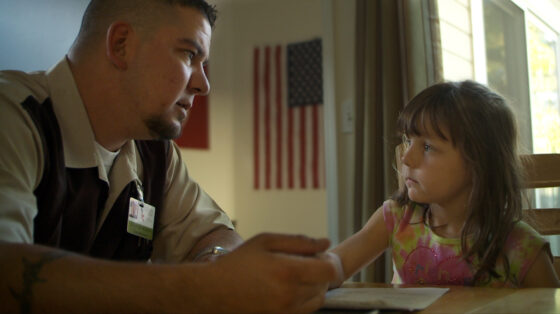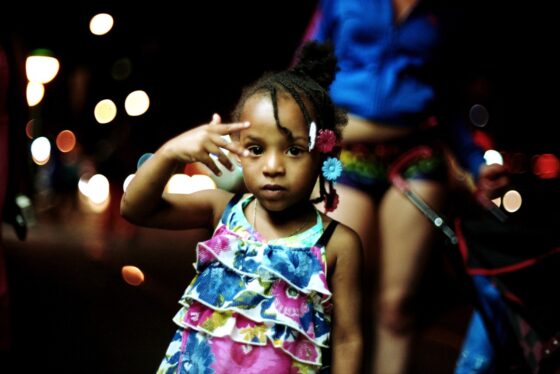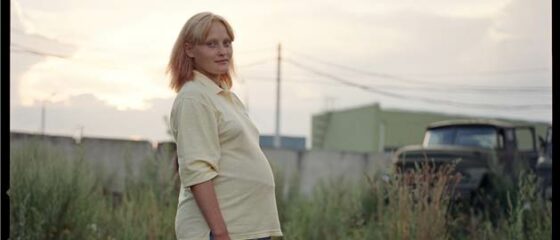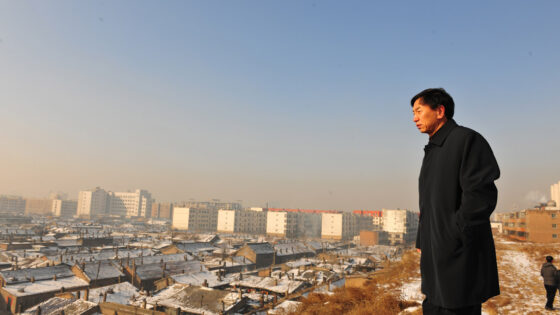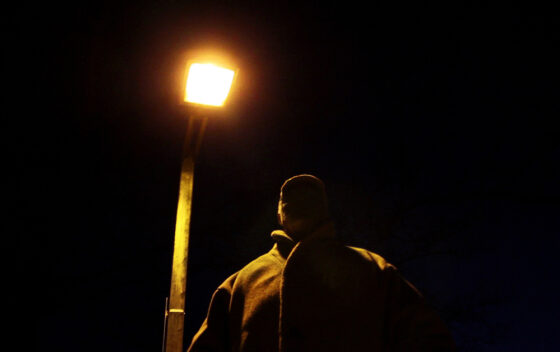No Line on the Horizon: True/False 2015
By Jordan Cronk
Director Albert Maysles passed away on the evening March 5th, the opening night of the 12th annual True/False Film Festival. Many were shocked and all were saddened when news of his death began to circulate the following morning, and his name was understandably on the tip of many people’s tongues throughout the weekend: among other gestures both private and public, Actress director and T/F regular Robert Greene spoke of Maylses’ kindness and unquenchable creative drive, while Bret Morgan dedicated a screening of his new film, Kurt Cobain: Montage of Heck, to the filmmaker’s memory. There was something almost eerie about the timing of Maysles’ passing, due to the fact that, as one of the pioneers of the direct cinema movement (along with his late brother David and contemporaries Robert Drew, Frederick Wiseman, and D. A. Pennebaker), Maysles is in many ways responsible for the vision and curatorial ambition of a festival like True/False. And while I saw nothing over the festival’s four days that seemed directly indebted to Maysles—certainly not to the degree of such past T/F highlights as last year’s Approaching the Elephant—nearly everything managed to feel spiritually related.
True/False has carved out a unique place for itself in recent years on its way to becoming America’s most vital documentary festival. In addition to anchoring their lineup with a handful of the previous year’s most acclaimed nonfiction and/or unclassifiable works—which this year accounts for the inclusions of Sergei Loznitsa’s Maidan, Ossama Mohammed and Wiam Simav Bedirxan’s Silvered Water, Syria Self-Portrait, Joshua Oppenheimer’s The Look of Silence, and Josh and Benny Safdie’s Heaven Knows What—they’ve assumed a parallel and even more crucial role in programming titles from larger festivals which got lost amidst higher profile premieres. The touching sibling odyssey Spartacus & Cassandra, for example, or the alternately humorous and humbling Rules of the Game, a study of unskilled young adults and the hurdles of corporate job consulting, are but two fine films which may parlay such newfound exposure. Another is Of Men and War by French director Laurent Bécue-Renard, which premiered last year as a Special Screening at Cannes but which garnered little in the way of critical discussion. Shot over a period of five years at a Napa Valley veteran’s home, Bécue-Renard’s film observes a group of Iraq War survivors suffering from post-traumatic stress disorder as they attend therapy sessions and attempt to mentally reintegrate themselves into their prior lives.
Much of the film is given over to detailed recollections of the harrowing events these soldiers experienced first-hand, charting the painful process of healing and reconciliation through the faces and feelings of heroic men who have been reduced to shells of their former selves. Scenes of the soldiers at home with their wives and children—where they project a stolid, occasionally violent demeanour—contrast mightily with the disarming moments of agony expressed in the episodes of group treatment. Bécue-Renard shoots in an observational yet intimate style, allowing these men to tell their stories and work out bouts of intergroup turmoil without imposing any superfluous stylistic or narrative devices, his camera unobtrusively capturing the sessions as if it were simply another soldier in the room. According to Bécue-Renard, he inserted a droning subliminal score in many scenes, underscoring the pre-existing tension between the soldiers while subtly heightening their chronicles of the atrocities of combat—an effect which may help account for both the film’s felt immediacy and its lingering power.
Equally compelling was Khalik Allah’s Field Niggas, a provocative 60-minute meditation on race, inequality and injustice set on a single Harlem street corner. A long-time street photographer, Allah frames the faces of his subjects as a succession of frontal portraits while removing their voices to the soundtrack. As we are forced to observe each unspeaking figure head-on, removed from assumptions and associations, the personal narratives we hear taking shape over top of these images become like internal monologues attributable to any and all of the people we see, providing cultural context even as the film avoids specific characterizations. Field Niggas quite literally gives voice to the voiceless, to those rarely allowed to convey their stories or speak of their experiences. “I can make a movie of my history,” an unidentified man states confidently early on; with Field Niggas, Allah has made a film not only rich with history (and histories), but one suffused with a stubborn faith in the promise of a better tomorrow.
A similar hope is embodied in the very title of Hanna Polak’s Something Better to Come, an affecting if occasionally sentimental look at an even more marginalized social group. Following a young girl named Yula from age ten to 24, the film returns roughly every two years to find her and her family living together on the margins of Moscow, in an enormous landfill on the outskirts of the city. Nothing but garbage is visible for miles around, the distant skyline of the city serving as the only reminder of “proper” civilization; meanwhile, bulldozers sporadically turn up dead bodies among the refuse.
Precocious and wise beyond her years, Yula attempts to survive in this grim environment alongside her friends and family. Living and convening together in shelters built from mountains of garbage and abandoned cars, most of this makeshift community’s adults, including Yula’s mother, spend their days smoking, drinking vodka, and playing cards. As Yula grows up, she experiences many of the same trials and tribulations as her more privileged counterparts, whilst obviously bereft of the resources and support to alter her situation; and by the time she’s 18, she’s pregnant and determined to keep her baby. A sensitive, often distressing account of Putin-era Russia, Something Better to Come wisely allows the political to articulate itself through the personal.
Focusing on Geng Yanbo, mayor of the city of Datong, Zhou Hao’s The Chinese Mayor gains unprecedented access to a public official pursuing change at the expense of the public: Geng’s plan to reconstruct the entire city in the name of tourism and “cultural renaissance” entails moving hundreds of thousands of working-class families out of their homes and into temporary housing complexes. What’s remarkable about the film isn’t only its on-the-ground footage of the resulting demolition and the dispersal of these citizens, but its complex depiction of Geng, a man caught between his grand ambition and the collateral effects of that ambition as he pursues his vision of a more financially and socially healthy Datong. When Geng is peremptorily removed from office late in the film, what began as observational becomes conversational, as Zhou and Geng discuss the filmmaking process and the now-former mayor speculates on his other vocational interests. The path Geng ultimately elects to follow offers material for another film entirely, but The Chinese Mayor raises enough questions about the responsibilities and ramifications of political filmmaking to keep the discussion going far beyond the cinema.
Following veteran undercover FBI agent Saeed Torres as he relocates to Pittsburgh to track the activities of a radicalized white Muslim named Khalifah, Lyric R. Cabral and David Felix Sutcliffe’s (T)error is a consistently surprising account of a botched counterterrorism operation that plays like a combination of character study and thriller. Despite its nonfiction framework, (T)error is a master class in narrative storytelling: text messages between Torres and the FBI scroll ominously across the screen in the lead-up to the ill-advised sting, information regarding the protagonists’ past associations and transgressions is sparingly and strategically divulged, and the directors expertly shift, and complicate, our sympathies for Torres and Kalifah throughout. After 90 breathless minutes, the obligatory postscript is both a necessary reprieve and a reminder that very real lives are at stake in this perhaps never-ending war.
A war of a different kind incites the events depicted in Western, the third film by brothers Bill and Turner Ross (Tchoupitoulas). Set in the border towns of Eagle Pass, Texas and Piedras Negras, Mexico, the film observes the once amicable relations between these two communities begin to fray after a series of drug cartel-related murders. Shot in a hypnotic blend of sun-baked hues and nocturnal fluorescents, Western slowly expands from topical interest to something far more intriguing and ineffable, as it quietly delves into the motivations and mindsets of its subjects and the ambiguously metaphysical implications engendered by the mysterious circumstances surrounding the murders. For a True/False where the thin line between life and death was on the mind as much as the one separating fiction from non-, Western was the one film to fully transcend the constraints of all such designations, looking toward the horizon of a cinema without borders.
Jordan Cronk
